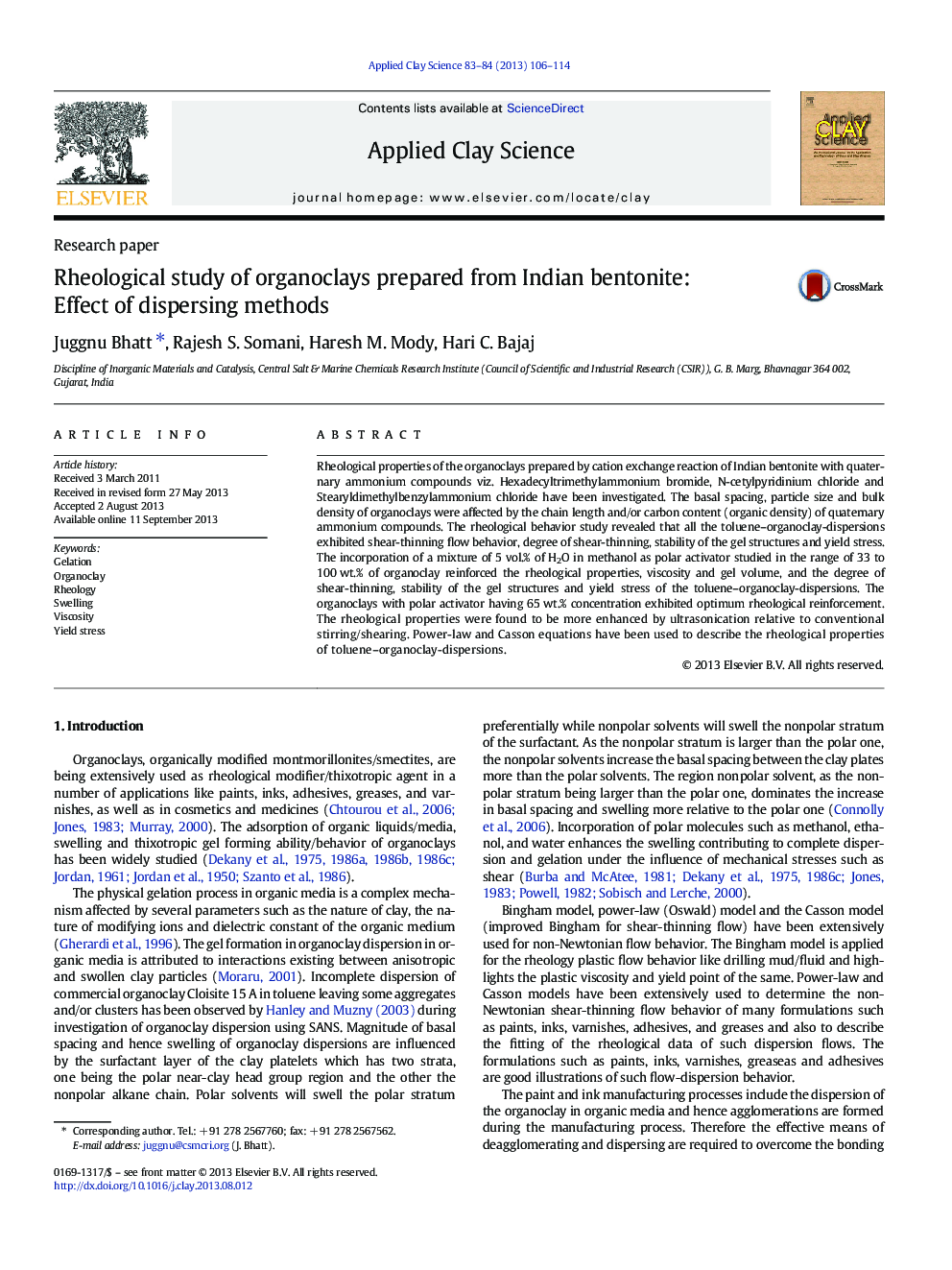| Article ID | Journal | Published Year | Pages | File Type |
|---|---|---|---|---|
| 1694872 | Applied Clay Science | 2013 | 9 Pages |
•Effect of organic density of modifier on organoclay dispersions studied.•Investigated the effect of shearing and ultrasonication, on organoclay dispersions.•Ultrasonic cavitation enhanced rheology of dispersions more profoundly than shearing.
Rheological properties of the organoclays prepared by cation exchange reaction of Indian bentonite with quaternary ammonium compounds viz. Hexadecyltrimethylammonium bromide, N-cetylpyridinium chloride and Stearyldimethylbenzylammonium chloride have been investigated. The basal spacing, particle size and bulk density of organoclays were affected by the chain length and/or carbon content (organic density) of quaternary ammonium compounds. The rheological behavior study revealed that all the toluene–organoclay-dispersions exhibited shear-thinning flow behavior, degree of shear-thinning, stability of the gel structures and yield stress. The incorporation of a mixture of 5 vol.% of H2O in methanol as polar activator studied in the range of 33 to 100 wt.% of organoclay reinforced the rheological properties, viscosity and gel volume, and the degree of shear-thinning, stability of the gel structures and yield stress of the toluene–organoclay-dispersions. The organoclays with polar activator having 65 wt.% concentration exhibited optimum rheological reinforcement. The rheological properties were found to be more enhanced by ultrasonication relative to conventional stirring/shearing. Power-law and Casson equations have been used to describe the rheological properties of toluene–organoclay-dispersions.
Graphical abstractFigure optionsDownload full-size imageDownload as PowerPoint slide
